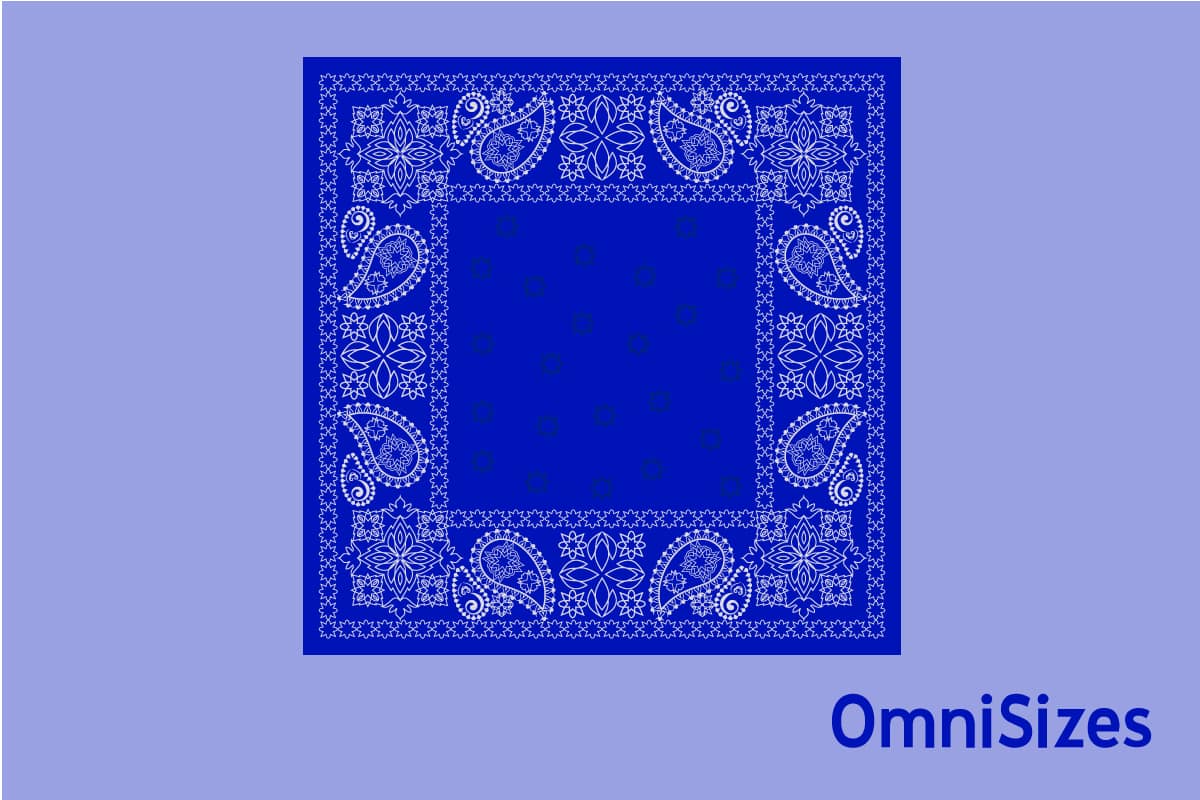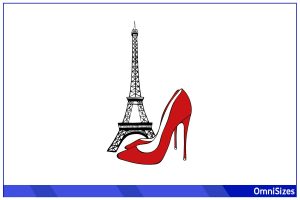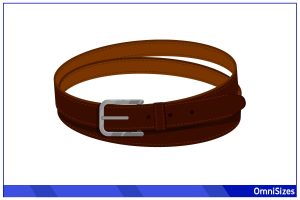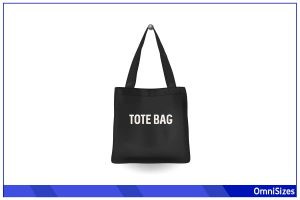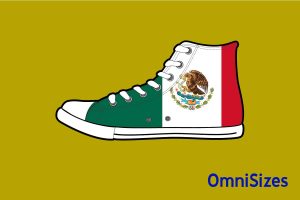A bandana can be the perfect head or neck accessory as long as you get the bandana dimensions just right. From cowboy neckties to chic hair adornments, the dimensions of a bandana can significantly influence its use and appearance.
The most common bandana dimensions are 22 × 22 inches or 56 × 56 centimeters for a square bandana. However, other prevalent sizes include 27 × 27 inches or 68.5 × 68.5 centimeters. Rectangular bandanas also have popular dimensions, often measuring 20 × 24 inches or 50.8 × 61 centimeters.
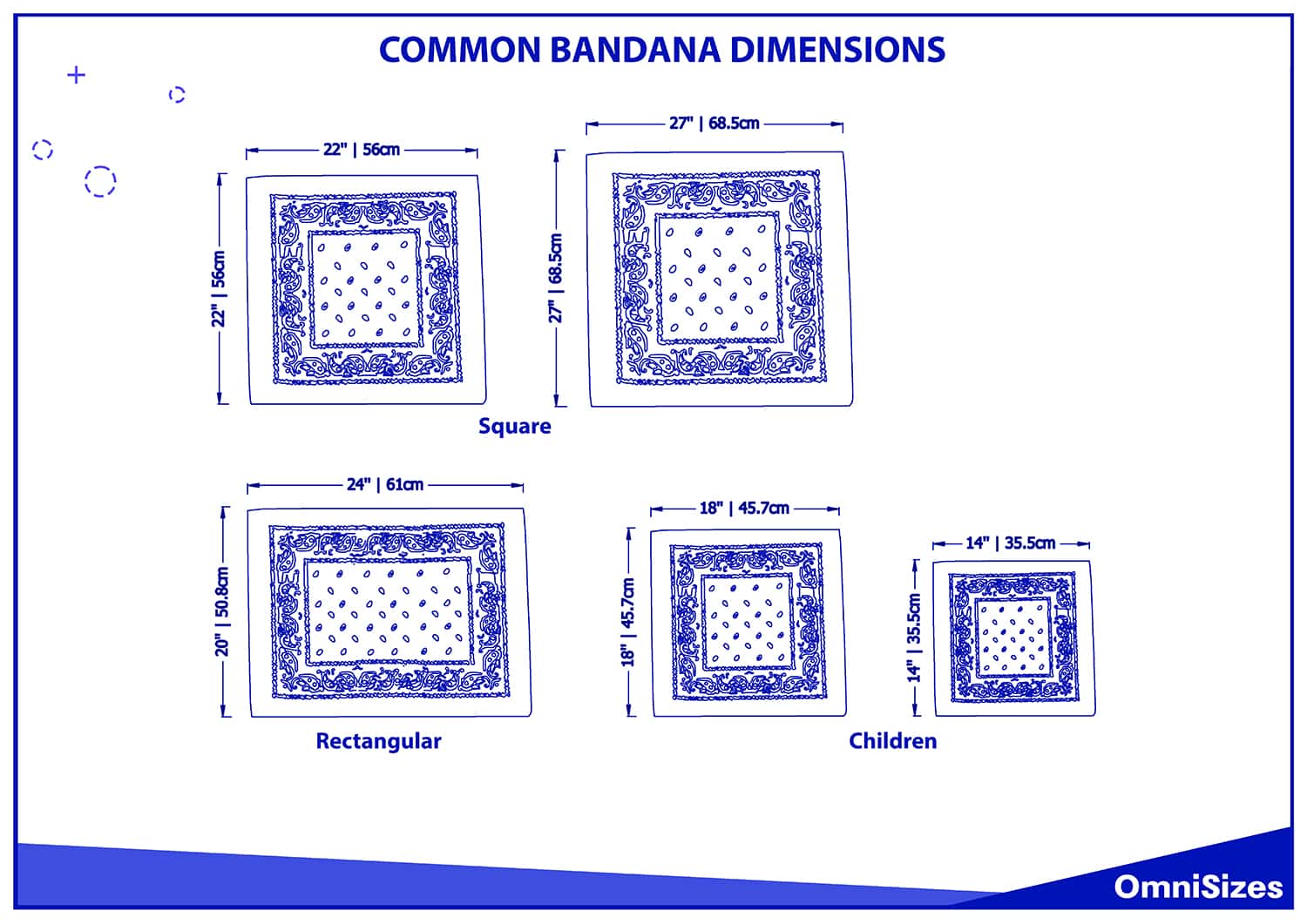
Today, we’ll talk about various bandana styles, their dimensions, and how to choose the right bandana size.
The Culture of Bandanas
Bandanas, with their myriad of colors, patterns, and sizes, have become an integral part of global fashion. But their journey is far more than just style. They’ve woven themselves into the fabric of various cultures.
Origins and Historical Significance
Tracing the origins of bandanas takes us back to ancient civilizations. In India, bandanas were originally known as ‘bandhani,’ a type of tie-dyeing technique. The concept traveled along the Silk Road, influencing Middle Eastern and subsequently Western cultures.
In the West, bandanas gained prominence during the American Revolution. Red bandanas were associated with rebellion and the fight for independence. As years passed, they were adopted by cowboys, who found them handy in protecting against dust and sweat.
Bandanas in Modern Pop Culture
The 20th and 21st centuries witnessed the rise of bandanas in pop culture. Celebrities from Tupac Shakur to Madonna have sported them, making bandanas a staple accessory for many.
Music festivals, too, have seen a surge in bandana-wearing attendees. They’re used not just as a style statement but also for practical reasons like protection from dust.
Furthermore, bandanas have made their mark in movies, representing everything from rebellion to camaraderie. Think of Johnny Depp in “Pirates of the Caribbean” or Bruce Springsteen’s iconic album covers.
Bandana Dimensions
When you think of a bandana, images of vibrant patterns wrapped around heads, necks, or even pets might come to mind. But beyond the colors and designs, the dimensions of a bandana play a significant role in its appeal.
Standard Bandana Sizes
Traditionally, bandanas are square-shaped, allowing for easy folding and tying. The most common size for these square bandanas is 22 × 22 inches or 56 × 56 centimeters. This size is popular because it offers enough fabric to be tied in various ways, be it around the head, neck, or wrist.
However, there are larger square sizes available, such as 27 × 27 inches or 68.5 × 68.5 centimeters, preferred by those looking for more coverage or a more dramatic look.
Rectangular Bandanas
Not all bandanas are square. Rectangular bandanas, often measuring 20 × 24 inches or 50.8 × 61 centimeters, have become trendy. These are especially useful for those looking for length, like when wanting a bandana to hang low from the neck or for specific hairstyles.
Children and Bandana Sizes
Kids are not left out of the bandana trend. Bandanas for children are often sized smaller, ranging from 14 × 14 inches to 18 × 18 inches. These sizes ensure that the bandana is proportionate to the child’s body and can be worn comfortably without excess fabric.
Custom Bandana Dimensions
With fashion being a form of self-expression, many choose to break away from standard sizes and opt for custom dimensions. Custom-sized bandanas allow wearers to get a fit tailored to their specific needs, be it for a unique fashion statement, a specific event, or a special project.
Choosing the Right Bandana Dimensions
Depending on the intended use, the right size can make all the difference.
Purpose Matters
- Fashion Statement: If you’re adding flair to an outfit, consider sizes like 20 × 20 inches or 50.8 × 50.8 centimeters. These can be tucked into pockets, tied around wrists, or knotted neatly around the neck.
- Functional Uses: For those who require a bandana for work or practical activities, like hiking, larger sizes might be ideal. They can offer protection against sun, dust, or sweat.
- Hair Accessory: A smaller bandana, around 20 × 20 inches, is light and versatile enough for various hairstyles without being too bulky.
Comfort is Key
- Material Feel: A silky bandana might feel cooler and lighter than a cotton one, even if they’re the same size.
- Tying Techniques: Some tying methods need more fabric than others. A simple knot might work with a smaller bandana, but a complex bow or wrap might require extra length and width.
Aesthetic Appeal
- Oversized Look: Larger bandanas, like those measuring 27 × 27 inches or 68.5 × 68.5 centimeters, create a bold statement, allowing patterns to be more visible.
- Subtle Accent: Smaller bandanas serve as subtle accents, adding a touch of color or pattern without overpowering an outfit.
Customization and Personal Style
- Unique Dimensions: If standard sizes don’t appeal to you, custom dimensions can cater to specific requirements, whether it’s a particular draping style or a unique tying method.
- Event-specific Needs: For special events or projects, a custom-sized bandana might be the perfect accessory or tool.
Adaptable Bandanas
- Square Versus Rectangular: While square bandanas are classic, rectangular ones can offer a different look and might be easier to tie in certain styles.
- Foldability: Consider how easily the bandana can be folded into desired shapes or thicknesses. A medium-sized bandana can often be versatile enough for varied folding styles.
Caring for Your Bandana
A bandana, with its vivid colors and versatile uses, can be a cherished accessory. Proper care can prolong its lifespan and maintain its vibrant look.
Washing Instructions
- Hand Wash Preferred: Gently washing your bandana by hand helps preserve its colors and fabric integrity. Use cold water and a mild detergent to prevent fading.
- Machine Wash: If you prefer using a washing machine, opt for a gentle cycle. Place the bandana in a mesh laundry bag to protect it from snags.
- Avoid Bleach: Bleach can weaken the fabric and fade colors. Instead, use a fabric-safe stain remover for stubborn spots.
Drying Tips
- Air Dry: Laying the bandana flat to air dry is recommended. This method prevents wrinkles and maintains the fabric’s shape.
- Avoid Direct Sunlight: If you’re drying outdoors, keep the bandana out of direct sunlight to prevent colors from fading.
- Use of Dryers: If you must use a dryer, select the lowest heat setting. High temperatures can shrink or warp the fabric.
Handling Stains
- Immediate Attention: Address spills or stains as soon as they occur. Blot, don’t rub, with a clean cloth to absorb as much of the spill as possible.
- Natural Stain Removers: For organic stains like fruit or wine, lemon juice or white vinegar can be effective. However, test on an inconspicuous area first.
- Oil-Based Stains: For greasy stains, sprinkle some cornstarch or talcum powder to absorb the oil. Let it sit for a few hours before brushing off.
